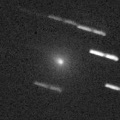
|
Now it is 10.4 mag (Feb. 17, Juan Jose Gonzalez). It stays as bright as 11 mag from January to February. In the Northern Hemisphere, it stays observable for a long time in the evening sky. In the Southern Hemisphere, it will be getting higher gradually.
Date(TT) R.A. (2000) Decl. Delta r Elong. m1 Best Time(A, h)
Feb. 24 1 38.55 3 9.1 1.333 1.017 49 11.3 19:14 ( 73, 28)
Mar. 3 2 12.96 4 56.7 1.351 1.060 51 11.7 19:20 ( 74, 29)
|
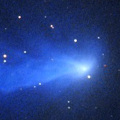
|
Now it is 11.8 mag (Feb. 15, Danil Sidorko). It will stay bright as 11 mag for a long time until spring. In the Southern Hemisphere, it will be unobservable in March. In the Northern Hemispehre, it stays observable for a long time after this until the comet fades out.
Date(TT) R.A. (2000) Decl. Delta r Elong. m1 Best Time(A, h)
Feb. 24 4 0.46 29 4.1 2.554 2.720 88 11.4 19:14 ( 79, 70)
Mar. 3 4 3.57 30 46.2 2.636 2.699 82 11.4 19:20 ( 89, 65)
|
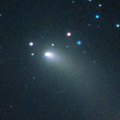
|
It brightened up to 9-10 mag from December to February. Juan Jose Gonzalez reported that it was bright as 9.3 mag on Feb. 21. However, Didac Mesa Romeu reported the condensation got weaker on Feb. 22. In the Northern Hemisphere, it stays extremely low after this. In the Southern Hemisphere, it is not observable until late March.
Date(TT) R.A. (2000) Decl. Delta r Elong. m1 Best Time(A, h)
Feb. 24 21 36.27 13 43.8 1.263 0.583 26 11.7 5:12 (257, 6)
Mar. 3 21 35.79 8 49.6 1.349 0.617 25 12.1 5:03 (264, 7)
|
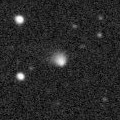
|
Now it is 12.1 mag (Feb. 17, Juan Jose Gonzalez). It stays 12 mag for a long time until spring in 2019. In the Northern Hemisphere, it stays observable in good condition while the comet will be brightening gradually. In the Southern Hemisphere, it is not observable until October.
Date(TT) R.A. (2000) Decl. Delta r Elong. m1 Best Time(A, h)
Feb. 24 14 49.46 75 28.7 2.646 3.061 105 12.4 4:35 (180, 50)
Mar. 3 13 57.89 78 28.6 2.616 3.027 104 12.3 3:18 (180, 47)
|
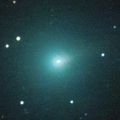
|
It brightened up to 9.2 mag from November to December (Nov. 16, Juan Jose Gonzalez). Now it is fading. But it is bright as 12.4 mag still now (Feb. 10, Chris Wyatt). It stays observable in good condition until summer when it fades out.
Date(TT) R.A. (2000) Decl. Delta r Elong. m1 Best Time(A, h)
Feb. 24 14 31.17 2 22.2 1.049 1.758 119 13.0 4:17 ( 0, 57)
Mar. 3 14 32.28 2 50.6 1.036 1.802 125 13.3 3:51 ( 0, 58)
|
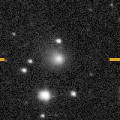
|
Now it is bright as 11.0 mag (Feb. 21, Juan Jose Gonzalez). It is expected to brighten up to 10 mag in summer. In the Northern Hemisphere, it stays observable until summer while the comet will be brightening. It is appear in the morning sky also in the Southern Hemisphere.
Date(TT) R.A. (2000) Decl. Delta r Elong. m1 Best Time(A, h)
Feb. 24 19 9.24 1 40.7 3.428 2.904 50 13.1 5:12 (290, 29)
Mar. 3 19 15.15 0 56.0 3.303 2.855 55 13.0 5:03 (293, 31)
|

|
It is not observable now. It will appear in the morning sky in late March in the Southern Hemisphere, or in late April in the Northern Hemisphere.
Date(TT) R.A. (2000) Decl. Delta r Elong. m1 Best Time(A, h)
Feb. 24 22 15.64 -7 48.6 6.781 5.793 3 13.9 5:12 (269,-15)
Mar. 3 22 21.00 -7 13.4 6.772 5.792 8 13.9 5:03 (271,-11)
|
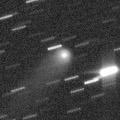
|
Now it is very bright as 12.1 mag (Feb. 16, Toshihiko Ikemura, Hirohisa Sato). It will be observable at 13-14 mag for a long time from 2017 to 2018. In the Southern Hemisphere, it will be hardly observable after this.
Date(TT) R.A. (2000) Decl. Delta r Elong. m1 Best Time(A, h)
Feb. 24 16 28.94 37 22.3 3.501 3.730 95 14.0 5:12 (255, 77)
Mar. 3 16 23.25 39 59.7 3.423 3.731 100 14.0 5:03 (234, 81)
|

|
It brightened up to 7.1 mag from May to June in 2017 (June 21, Juan Jose Gonzalez). Now it is fading. It has already faded down to 12.9 mag (Jan. 17, Chris Wyatt). In the Southern Hemisphere, it stays observable for a long time after this. However, it will be extremely low from January to March. It will never be observable again in the Northern Hemisphere.
Date(TT) R.A. (2000) Decl. Delta r Elong. m1 Best Time(A, h)
Feb. 24 23 10.09 -48 6.2 4.241 3.534 39 14.1 19:14 ( 49,-28)
Mar. 3 23 23.65 -47 18.2 4.292 3.600 40 14.2 19:20 ( 51,-31)
|
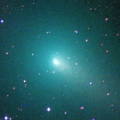
|
It brightened up to 8.1 mag in autumn (Oct. 3, Juan Jose Gonzalez). Now it is fading. It has already faded down to 16.6 mag (Feb. 13, Toshihiko Ikemura, Hirohisa Sato). In the Northern Hemisphere, it stays observable in good condition for a long time. In the Southern Hemisphere, it will never be observable again after this.
Date(TT) R.A. (2000) Decl. Delta r Elong. m1 Best Time(A, h)
Feb. 24 6 10.88 76 33.0 1.853 2.319 105 14.8 19:58 (180, 49)
Mar. 3 6 34.61 74 25.6 1.953 2.386 103 15.2 19:53 (180, 51)
|
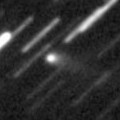
|
Now it is 13.8 mag (Feb. 10, Chris Wyatt). It stays 14 mag for a while. It stays observable in the evening sky until spring.
Date(TT) R.A. (2000) Decl. Delta r Elong. m1 Best Time(A, h)
Feb. 24 2 55.09 -8 3.7 2.297 2.099 65 14.8 19:14 ( 48, 34)
Mar. 3 3 5.15 -4 16.0 2.392 2.125 62 15.0 19:20 ( 57, 33)
|
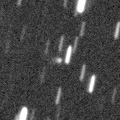
|
Now it is 15.8 mag (Feb. 18, Toshihiko Ikemura, Hirohisa Sato). It will brighten up to 9 mag in summer. However, it is hardly observable when it is bright. In the Northern Hemisphere, it is observable only until March when it brightens up to 14 mag. In the Southern Hemisphere, it is observable from July to September, but it locates in extremely low.
Date(TT) R.A. (2000) Decl. Delta r Elong. m1 Best Time(A, h)
Feb. 24 0 21.84 42 2.7 2.852 2.474 57 15.2 19:14 (122, 31)
Mar. 3 0 35.39 40 33.7 2.846 2.385 52 15.0 19:20 (122, 27)
|
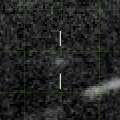
|
Now it is 17.2 mag (Jan. 14, iTelescope Observatory, Siding Spring). It will be observable at 14 mag in good condition from spring to summer.
Date(TT) R.A. (2000) Decl. Delta r Elong. m1 Best Time(A, h)
Feb. 24 18 24.76 -30 33.5 2.017 1.746 59 15.4 5:12 (322, 12)
Mar. 3 18 47.07 -30 13.4 1.945 1.721 62 15.2 5:03 (321, 12)
|
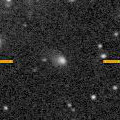
|
Now it is 16.3 mag (Feb. 18, Toshihiko Ikemura, Hirohisa Sato). It is expected to brighten up to 13-14 mag from 2018 to 2019. In the Northern Hemisphere, it stays observable in good condition for a long time. In the Southern Hemisphere, it is not observable until summer in 2018.
Date(TT) R.A. (2000) Decl. Delta r Elong. m1 Best Time(A, h)
Feb. 24 19 33.18 38 53.3 4.807 4.450 63 15.9 5:12 (246, 41)
Mar. 3 19 35.78 39 13.2 4.733 4.408 65 15.8 5:03 (247, 45)
|

|
Now it is 16.2 mag (Feb. 13, Toshihiko Ikemura, Hirohisa Sato). It stays 16-17 mag for a long time from 2016 to 2019. It stays near by the equator.
Date(TT) R.A. (2000) Decl. Delta r Elong. m1 Best Time(A, h)
Feb. 24 10 25.84 6 13.9 8.614 9.601 176 15.8 0:13 ( 0, 61)
Mar. 3 10 24.28 6 34.2 8.622 9.605 172 15.8 23:39 ( 0, 62)
|

|
It stays 15 mag from 2018 to 2019, and it will be observable for a long time in the Southern Hemisphere. In the Northern Hemisphere, it will never be observable again.
Date(TT) R.A. (2000) Decl. Delta r Elong. m1 Best Time(A, h)
Feb. 24 14 11.14 -58 36.5 4.650 4.892 98 15.9 3:58 ( 0, -4)
Mar. 3 14 9.09 -60 6.3 4.543 4.858 102 15.9 3:28 ( 0, -5)
|
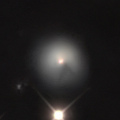
|
Outburst occured in early December, and it brightened up to 13.2 mag (Dec. 11, Seiichi Yoshida). It has already faded down to 17.5 mag (Feb. 20, Toshihiko Ikemura, Hirohisa Sato). It stays observable in good condition for a while.
Date(TT) R.A. (2000) Decl. Delta r Elong. m1 Best Time(A, h)
Feb. 24 2 44.68 12 17.9 7.817 7.494 67 15.9 19:14 ( 69, 46)
Mar. 3 2 47.48 12 32.7 7.939 7.512 61 16.2 19:20 ( 76, 40)
|

|
Now it is 15.7 mag (Feb. 7, Alexander Baransky). It will be observable at 16 mag in good condition from winter to spring.
Date(TT) R.A. (2000) Decl. Delta r Elong. m1 Best Time(A, h)
Feb. 24 11 52.23 10 45.0 2.595 3.538 159 15.9 1:39 ( 0, 66)
Mar. 3 11 48.35 11 16.0 2.569 3.539 165 15.9 1:07 ( 0, 66)
|
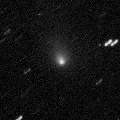
|
It brightened very rapidly up to 13.8 mag in August (Aug. 22, kunihiro Shima). After that, it is fading gradually. Now it is 15.9 mag (Feb. 13, Toshihiko Ikemura, Hirohisa Sato). It will be unobservable in March.
Date(TT) R.A. (2000) Decl. Delta r Elong. m1 Best Time(A, h)
Feb. 24 1 32.35 -2 27.5 2.789 2.226 46 15.9 19:14 ( 69, 23)
Mar. 3 1 43.97 -0 22.1 2.832 2.211 42 16.0 19:20 ( 75, 20)
|
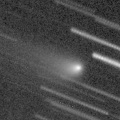
|
Appearing in the morning sky. It is fading now. But it stays 16 mag until summer.
Date(TT) R.A. (2000) Decl. Delta r Elong. m1 Best Time(A, h)
Feb. 24 19 24.40 -21 27.1 3.901 3.284 45 16.1 5:12 (305, 10)
Mar. 3 19 24.05 -21 46.0 3.830 3.324 52 16.1 5:03 (309, 13)
|
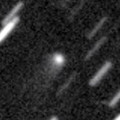
|
Now it is 15.9 mag (Feb. 12, Toshihiko Ikemura, Hirohisa Sato). It stays 16 mag for a long time from 2017 to 2018. It is observable in excellent condition in the Northern Hemisphere. It locates very low in the Southern Hemisphere.
Date(TT) R.A. (2000) Decl. Delta r Elong. m1 Best Time(A, h)
Feb. 24 7 37.75 42 13.8 4.675 5.372 130 16.2 21:21 (180, 83)
Mar. 3 7 30.26 42 47.5 4.777 5.379 122 16.2 20:46 (180, 82)
|

|
Now it is 17.3 mag (Feb. 20, Toshihiko Ikemura, Hirohisa Sato). It stays 17 mag in 2018.
Date(TT) R.A. (2000) Decl. Delta r Elong. m1 Best Time(A, h)
Feb. 24 3 21.60 1 18.3 6.833 6.628 73 16.4 19:14 ( 49, 45)
Mar. 3 3 24.53 1 41.7 6.967 6.660 68 16.4 19:20 ( 57, 40)
|
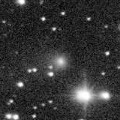
|
Now it is 16.1 mag (Feb. 18, Toshihiko Ikemura, Hirohisa Sato). It will be fading after this. In the Northern Hemisphere, it stays observable in the northern sky for a long time. It is not observable at all after this in the Southern Hemisphere.
Date(TT) R.A. (2000) Decl. Delta r Elong. m1 Best Time(A, h)
Feb. 24 21 16.73 71 17.5 3.548 3.545 81 16.4 5:12 (203, 34)
Mar. 3 21 29.19 73 10.4 3.587 3.574 81 16.5 5:03 (200, 35)
|

|
It will brighten up to 16 mag in spring. In the Southern Hemisphere, it stays observable until August, but it will be unobservable after that. In the Northern Hemisphere, it stays unobservable until June, but it will be observable in good condition after that.
Date(TT) R.A. (2000) Decl. Delta r Elong. m1 Best Time(A, h)
Feb. 24 19 8.16 -47 38.1 1.849 1.542 56 16.6 5:12 (326, -6)
Mar. 3 19 44.54 -47 4.2 1.784 1.493 56 16.5 5:03 (324, -8)
|
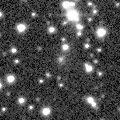
|
Now it is 16.6 mag (Feb. 13, Toshihiko Ikemura, Hirohisa Sato). It will pass the perihelion in 2019. However, it has not been brightening since the discovery in 2010. It is observable in good conditioin in the Northern Hemisphere. It is not observable for a long time in the Southern Hemisphere.
Date(TT) R.A. (2000) Decl. Delta r Elong. m1 Best Time(A, h)
Feb. 24 5 38.26 75 25.9 8.432 8.720 103 16.8 19:23 (180, 50)
Mar. 3 5 38.94 75 3.3 8.488 8.710 99 16.8 19:20 (178, 50)
|
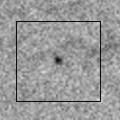
|
It will brighten rapidly after this, and it will brighten up to 11 mag from summer to autumn. It is observable in excellent condition in the Southern Hemisphere. It locates somewhat low in the Northern Hemisphere.
Date(TT) R.A. (2000) Decl. Delta r Elong. m1 Best Time(A, h)
Feb. 24 18 58.83 -18 23.2 2.876 2.385 51 17.2 5:12 (308, 17)
Mar. 3 19 12.71 -18 15.6 2.784 2.358 54 16.9 5:03 (308, 18)
|
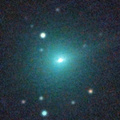
|
It brightened up to 9.7 mag in November (Nov. 16, Juan Jose Gonzalez). Now it is fading rapidly. It has already faded down to 15.5 mag (Feb. 12, Toshihiko Ikemura, Hirohisa Sato).
Date(TT) R.A. (2000) Decl. Delta r Elong. m1 Best Time(A, h)
Feb. 24 16 31.31 -11 32.3 1.464 1.726 87 16.9 5:12 (339, 41)
Mar. 3 16 39.03 -11 54.5 1.445 1.783 92 17.1 5:03 (342, 41)
|
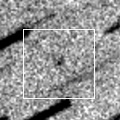
|
Now it is 17.6 mag (Feb. 18, Martin Masek). It will brighten rapidly after this, and will brighten up to 12 mag from April to June. In the Southern Hemisphere, it stays observable in excellent condition. In the Northern Hemisphere, it will be unobservable from April to June when the comet becomes brightest.
Date(TT) R.A. (2000) Decl. Delta r Elong. m1 Best Time(A, h)
Feb. 24 16 36.92 -27 25.8 1.487 1.691 83 17.3 5:12 (343, 25)
Mar. 3 16 59.77 -29 38.9 1.386 1.636 85 16.9 5:03 (342, 23)
|
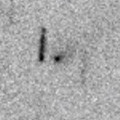
|
Now it is 17.4 mag (Feb. 13, Toshihiko Ikemura, Hirohisa Sato). It will be fading after this, and will be fainter than 18 mag in April.
Date(TT) R.A. (2000) Decl. Delta r Elong. m1 Best Time(A, h)
Feb. 24 9 33.62 -15 55.2 2.272 3.175 151 17.0 23:16 ( 0, 39)
Mar. 3 9 30.11 -15 43.2 2.322 3.214 149 17.1 22:45 ( 0, 39)
|

|
Now it is 16.1 mag (Feb. 18, Toshihiko Ikemura, Hirohisa Sato). It will be fading gradually after this, and it will be fainter than 18 mag in autumn. In the Northern Hemisphere, it stays observable in good condition for a long time. In the Southern Hemisphere, it will never be observable again.
Date(TT) R.A. (2000) Decl. Delta r Elong. m1 Best Time(A, h)
Feb. 24 21 9.29 61 25.8 7.157 6.928 72 17.0 5:12 (214, 32)
Mar. 3 21 20.45 61 59.5 7.202 6.949 71 17.1 5:03 (214, 33)
|
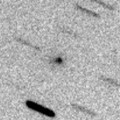
|
Now it is 18.5 mag (Feb. 12, Toshihiko Ikemura, Hirohisa Sato). It stays observable at 17 mag in good condition for a while. It will be fainter than 18 mag in May.
Date(TT) R.A. (2000) Decl. Delta r Elong. m1 Best Time(A, h)
Feb. 24 15 17.21 -7 50.0 1.998 2.459 105 17.1 5:03 ( 0, 47)
Mar. 3 15 20.37 -7 36.3 1.947 2.494 111 17.1 4:39 ( 0, 47)
|
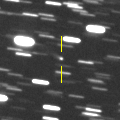
|
Now it is 17.4 mag (Feb. 12, Toshihiko Ikemura, Hirohisa Sato). It stays observable at 18 mag for a long time until 2019.
Date(TT) R.A. (2000) Decl. Delta r Elong. m1 Best Time(A, h)
Feb. 24 5 36.14 16 40.7 7.560 7.938 109 17.4 19:20 ( 0, 72)
Mar. 3 5 33.46 16 31.6 7.680 7.936 101 17.4 19:20 ( 22, 70)
|
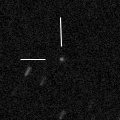
|
Now it is 17.3 mag (Feb. 13, Toshihiko Ikemura, Hirohisa Sato). It will brighten up to 15.5 mag in January, 2019. It stays observable in excellent condition in the Northern Hemispehre. It is observable only until June, 2018, in the Southern Hemisphere.
Date(TT) R.A. (2000) Decl. Delta r Elong. m1 Best Time(A, h)
Feb. 24 12 34.23 18 14.1 3.551 4.423 148 17.7 2:21 ( 0, 73)
Mar. 3 12 25.73 20 17.5 3.469 4.382 154 17.6 1:45 ( 0, 75)
|
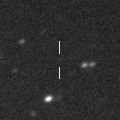
|
It is observable at 17.5 mag in good condition from February to April. However, now it is 18.7 mag (Feb. 13, Toshihiko Ikemura, Hirohisa Sato), fainter than predicted.
Date(TT) R.A. (2000) Decl. Delta r Elong. m1 Best Time(A, h)
Feb. 24 11 59.45 -7 33.5 1.825 2.735 151 17.7 1:46 ( 0, 47)
Mar. 3 11 56.45 -7 0.5 1.785 2.734 159 17.6 1:15 ( 0, 48)
|
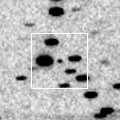
|
Now it is 17.6 mag (Feb. 21, Toshihiko Ikemura, Hirohisa Sato). It will brighten up to 17 mag and will be observable in good condition in spring.
Date(TT) R.A. (2000) Decl. Delta r Elong. m1 Best Time(A, h)
Feb. 24 13 11.49 -13 52.1 1.802 2.581 133 17.8 2:58 ( 0, 41)
Mar. 3 13 11.34 -13 57.0 1.733 2.572 139 17.7 2:30 ( 0, 41)
|
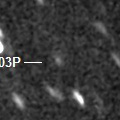
|
Now it is 18.4 mag (Jan. 15, Toshihiko Ikemura, Hirohisa Sato). It will be fading slowly after this.
Date(TT) R.A. (2000) Decl. Delta r Elong. m1 Best Time(A, h)
Feb. 24 11 40.95 -12 50.8 2.438 3.339 151 17.7 1:28 ( 0, 42)
Mar. 3 11 34.82 -12 8.8 2.444 3.385 158 17.7 0:54 ( 0, 43)
|
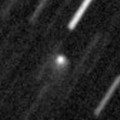
|
Now it is 17.5 mag (Feb. 18, Toshihiko Ikemura, Hirohisa Sato). It is observable at 18 mag in good condition from winter to spring.
Date(TT) R.A. (2000) Decl. Delta r Elong. m1 Best Time(A, h)
Feb. 24 12 31.73 13 55.0 4.612 5.487 149 17.7 2:18 ( 0, 69)
Mar. 3 12 25.96 15 28.8 4.590 5.509 155 17.7 1:45 ( 0, 70)
|
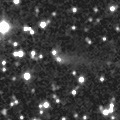
|
Now it is 18.0 mag (Feb. 18, Toshihiko Ikemura, Hirohisa Sato). It will be fading after this, and will be fainter than 18 mag in March. It is observable in excellent condition in the Northern Hemisphere. It locates low in the Southern Hemisphere.
Date(TT) R.A. (2000) Decl. Delta r Elong. m1 Best Time(A, h)
Feb. 24 5 9.15 33 42.0 3.067 3.442 103 17.7 19:14 ( 75, 85)
Mar. 3 5 13.85 33 28.6 3.186 3.465 97 17.8 19:20 ( 85, 80)
|
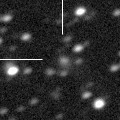
|
Now it is 16.9 mag (Feb. 13, Toshihiko Ikemura, Hirohisa Sato). It was observed at 17 mag in 2017. It will be observable at 18 mag in 2018.
Date(TT) R.A. (2000) Decl. Delta r Elong. m1 Best Time(A, h)
Feb. 24 15 5.66 -18 37.3 5.867 6.211 105 17.8 4:52 ( 0, 36)
Mar. 3 15 5.58 -17 59.3 5.771 6.227 113 17.7 4:24 ( 0, 37)
|
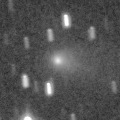
|
It brightened up to 14.8 mag from autumn to winter (Nov. 21, Hiroshi Abe). Now it is fading. It has already faded down to 17.1 mag (Feb. 12, Toshihiko Ikemura, Hirohisa Sato). It is observable in good condition in the Northern Hemisphere. It locates low in the Southern Hemisphere.
Date(TT) R.A. (2000) Decl. Delta r Elong. m1 Best Time(A, h)
Feb. 24 5 22.73 36 57.1 1.973 2.449 106 17.9 19:14 (143, 88)
Mar. 3 5 31.05 36 33.2 2.088 2.485 101 18.1 19:20 (106, 83)
|
|
![]()
 C/2010 U3 ( Boattini )
C/2010 U3 ( Boattini ) 48P/Johnson
48P/Johnson 24P/Schaumasse
24P/Schaumasse 66P/du Toit
66P/du Toit C/2016 T3 ( PanSTARRS )
C/2016 T3 ( PanSTARRS ) C/2014 OE4 ( PanSTARRS )
C/2014 OE4 ( PanSTARRS ) 30P/Reinmuth 1
30P/Reinmuth 1 C/2015 XY1 ( Lemmon )
C/2015 XY1 ( Lemmon ) C/2018 A3 ( ATLAS )
C/2018 A3 ( ATLAS ) 235P/LINEAR
235P/LINEAR 143P/Kowal-Mrkos
143P/Kowal-Mrkos 103P/Hartley 2
103P/Hartley 2 C/2017 D3 ( ATLAS )
C/2017 D3 ( ATLAS ) 90P/Gehrels 1
90P/Gehrels 1 C/2017 E3 ( PanSTARRS )
C/2017 E3 ( PanSTARRS ) 145P/Shoemaker-Levy 5
145P/Shoemaker-Levy 5![]()






































